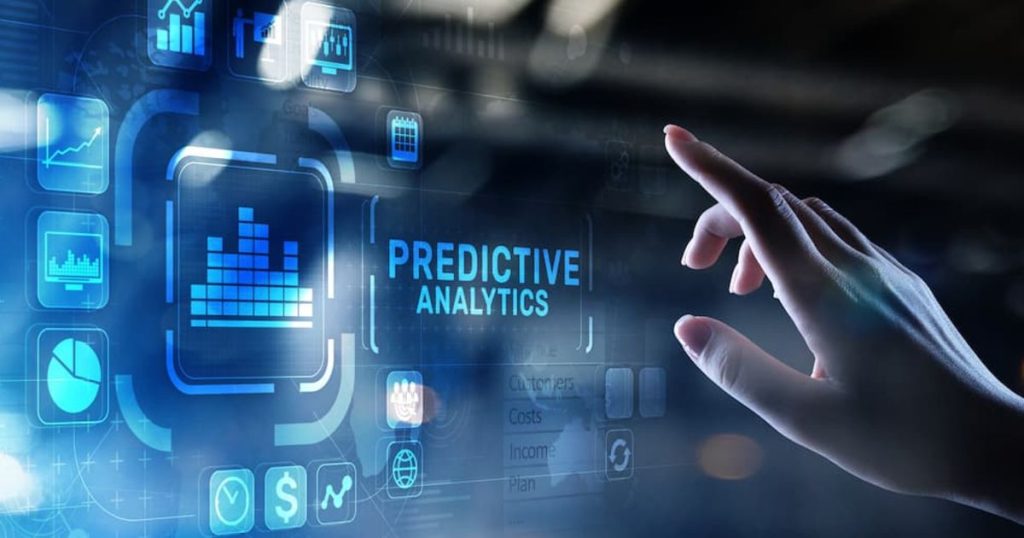Artificial Intelligence is on a mission of making an impression in almost every domain. AI is redefining the relationship between humans and the means of making a living. AI helps businesses place their product in the market, identify their market using consumer data and improve on offering that they create in future. As AI continues to change the digital market, the digital world of today is drastically changing. AI has been employed as the bulk of marketers utilize it for retaining customers, propounding content, and running campaigns as it confirms customer behavior.
Artificial intelligence is the key which can be used to efficiently convert digital marketing into a machine-driven, production consuming structure. It is high time we went thoroughly through the diverse use of Artificial Intelligence in marketing.
1) Personalization and Targeted Advertising

Personalization and targeted advertising using AI is optimized to the individuals’ behaviors, preferences and the demographics that they belong to. And it is being used to expose them to ads based on their certain behaviors, preferences and perhaps demographics. The recent practice of Google in responsive search ads is among these examples; these ads are accessible to marketers who use several headlines and descriptions. AI does the bidding by feeding it with different combinations of ads and learning which techno turn out to be best for which search queries. Doing it this way enables a system of advertisement to boil down ad targeting to an individual level, so each person sees the ad that is most relevant to them.
The AI goes deeper in performing an analysis of the users data which include search history, location and device type to decide on which ad variation will be ideal for the target audience and eventually will lead to improved engagement rates and better conversions rates. Moreover, with the help of this method the user experience is significantly improved by providing the targeted customers with the most relevant ads, as well as advertisement campaigns by optimizing ad content in a real-time manner.
2) Programmatic Advertising

Programmatic advertising automates the buying and placing of ads using AI and real-time bidding, optimizing ad spend by targeting specific audiences at the right time and place. An example of this is RTB House, which uses deep learning for personalized retargeting and ad buying. Their AI-driven approach helps brands like eBay and Audi enhance online presence and sales by placing ads where they will be most effective, based on user behavior and preferences. This method ensures that ads are more relevant to the audience, increasing the likelihood of engagement and conversion, thereby maximizing the efficiency of advertising budgets
3) Predictive Analytics

Predictive analytics in advertising uses AI to forecast future trends, behaviors, and outcomes based on historical data. This approach helps businesses make informed decisions and strategize effectively. For instance, Moz’s Domain Authority (DA) checker leverages a complex neural network to predict how likely a website is to rank on search engine result pages.
By estimating a site’s potential to rank, marketers can prioritize their SEO efforts, focusing on high-DA sites for link-building to enhance their online visibility. Predictive analytics processes vast amounts of complex data, identifying patterns and insights that humans might overlook, thus allowing for more accurate predictions and strategic planning in marketing campaigns.
4) Sentiment Analysis

At its core, Sentiment Analysis in advertising relies on AI for the detection of the emotional vibrations behind the consumers’ comments, social media posts or perhaps online reviews. Insights from this analysis aid companies to catch the real sentiments of consumers concerning their products or services, therefore helping them develop customer-focused marketing strategies and interactions. A case in point here is EliseAI, an AI-powered chatbot that instantly converses with potential clients and customers as needed.
EliseAI not only answers questions but also performs actions based on the customer’s comment, extending an authentic “human touch” phenomenon during the conversation. The purpose of this AI tool is to track customer emotions and be able to react accordingly, allowing for an enriched customer experience and a positive brand perception.
5) Chatbots and Virtual Assistants

With the use of AI technologies such as chatbots and virtual assistants, users can have AI-powered tools talk to them like a human for assistance. They are now an inseparable part of the anomalous offering of fast, 24/7 full-time customer service and support. As a case in point, Ada has developed an AI-driven customer service automation tool which allows the customers to easily resolve their issues with the help of bots. In addition to that, Ada platform improvement leads to one of the most effective ways of scaling the customer support operations across multiple digital resources and social channels.
It can reply to automatically ask frequently asked questions, start the customer’s talk without much delay and take to another stage of the customer inquiries in some cases. Hands-free agents provide not only an advantage for human officers by automating repetitive tasks but also improve customer experience with timely and correct answers to the consumers’ questions.
6) Visual Search

Visual may digitize images and then use machine learning to return search results associated with the provided image via visual search. The application of this technology gives an opportunity to the users to type in their requirements by photograph rather than text-based inquiry.
Pinterest also has taken a step towards an immersive experience of visual search through its visual search tool. One can swipe a realizer on a product or upload an image in order to find something similar, or related to that item on Pinterest. This function takes advantage of AI in capturing the content of the image and looking for similar items in its huge database, thus providing persons who wish to purchase something that aligns with the prominent color or shape that’s found in the image they originally searched. This feature has a positive influence on the shopping experience by making it much easier and to what extent the user is drawn by the visual sense.
7) Voice Search

Voice search, which is AI enabled, users may look for any information on the internet via speaking to a device. Such technology employs natural language processing principles to determine the topic of a user’s spoken utterance and to demonstrate the results. Voice search has been one of the dominant search options on smart devices and smart speakers, such as Google Home, and Amazon Echo.
For example, Google has been consistently upgrading its voice search capabilities in that its Assistant can now easily comprehend and process demanding inquiries with a high degree of precision. Users can ask for directions, search for products, or get a variety of answers to questions in a natural and conversational manner. This leap toward voice search is meaningful, since it brings about a different approach to keyword targeting in digital marketing, by making long-tail keywords and more alike to common language used, natural and human-like speech.
8) Content Creation

What AI has done to advertising is to restructure the content creation process into a much faster generation of specific and attractive content. Say, AI platforms used in HubSpot’s article analyze user input and make the creative options, like visuals and copywriting, automated based on that feedback. This, in turn, speeds up the content development and enables more customized and distinctive marketing content.
These intelligent AI systems inspect data to understand the target audience’s inclinations and dynamics so as to present the content that will appeal to the given group. This means that the marketers can now produce high-end content in a much more efficient way. This helps them achieve the goals of the campaign and maximize audience engagement.
9) Ad Performance Analysis

AI for Ads Performance Analysis includes employing state-of-the-art technologies and related algorithms to analyze and optimize the efficacy of marketing campaigns. For instance, IBM Watson assists organizations with the creation of marketing strategies by helping them target specific audiences, pick the relevant content, and talking directly with these audiences.
Therefore, this operation enables businesses to increase their ad budget efficiency, to shape their campaigns to be better aligned with their customers’ preferences. The AI system performs data analytics on the customer contacts with the marketing campaign, and the insights that it picks up are utilized by the marketer in real-time, adjusting the strategies, which makes sure the content connects with the potential buyers and improves campaign effectiveness
10) Dynamic Pricing

Dynamic pricing, commonly referred to as demand-based pricing or time-based pricing, is a strategy where a price is adjusted at a specific time determined by the market demand, the supply conditions, the customers’ behavior, and other external factors. This method is more about utilizing AI machine learning algorithms for analyzing large volumes of data such as rival pricing, market demand, and customer buying pattern in order to arrive at the most competitive price points for their products or services.
Finally, there is a case of the airline sector where prices change dynamically depending on such factors as booking time and date, availability of seats, and popularity of the flight. AI algorithms compute these trends and further adapt the price range dynamically, therefore they provide the best rates and seat inventory management with the purpose of maximizing the revenue. For another example, dynamic pricing is employed by sites such as Amazon in which the price for some products adjusts instantly in response to current market changes caused by competitors’ strategies in order to draw in more customers and boost sales.





